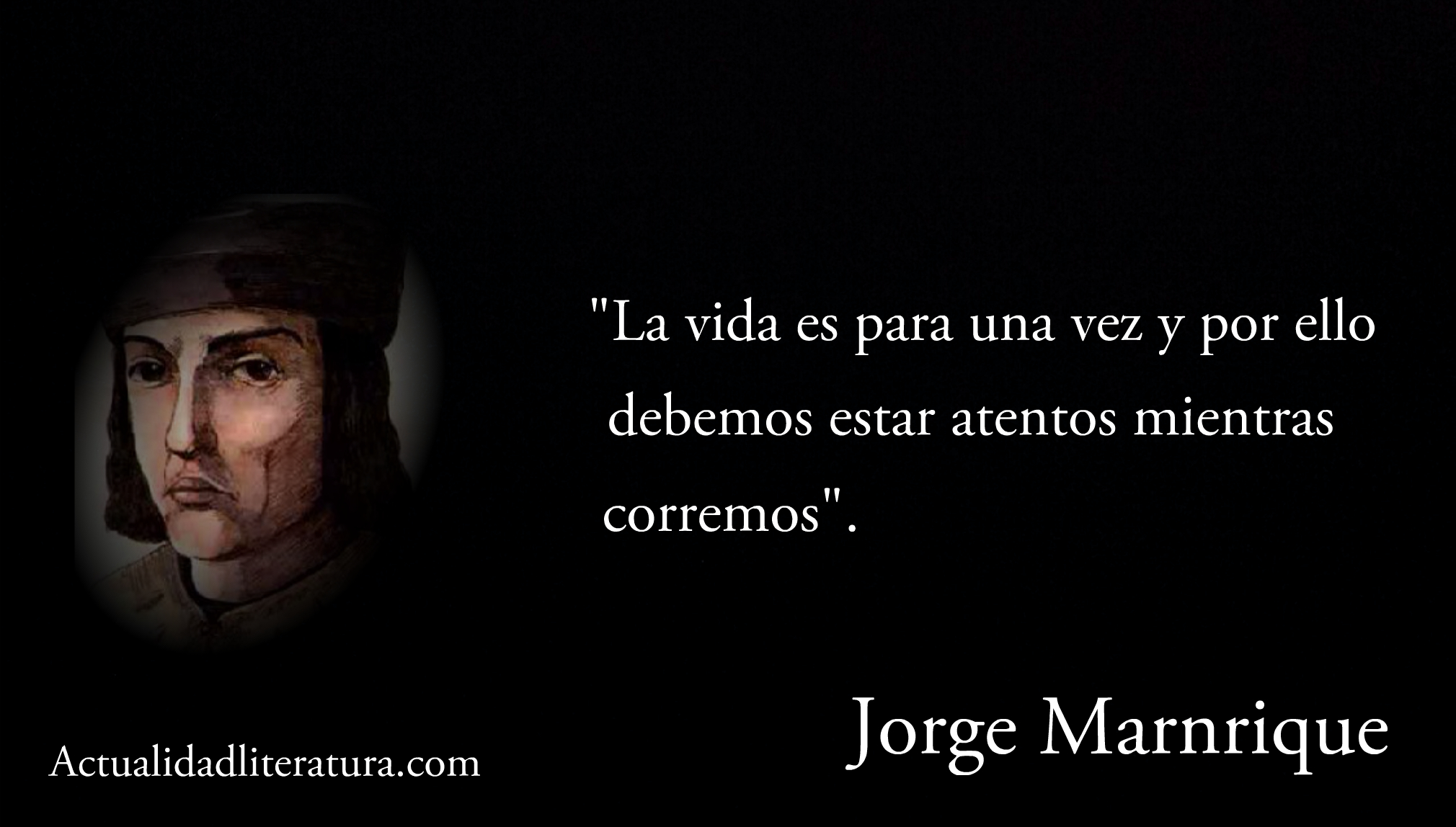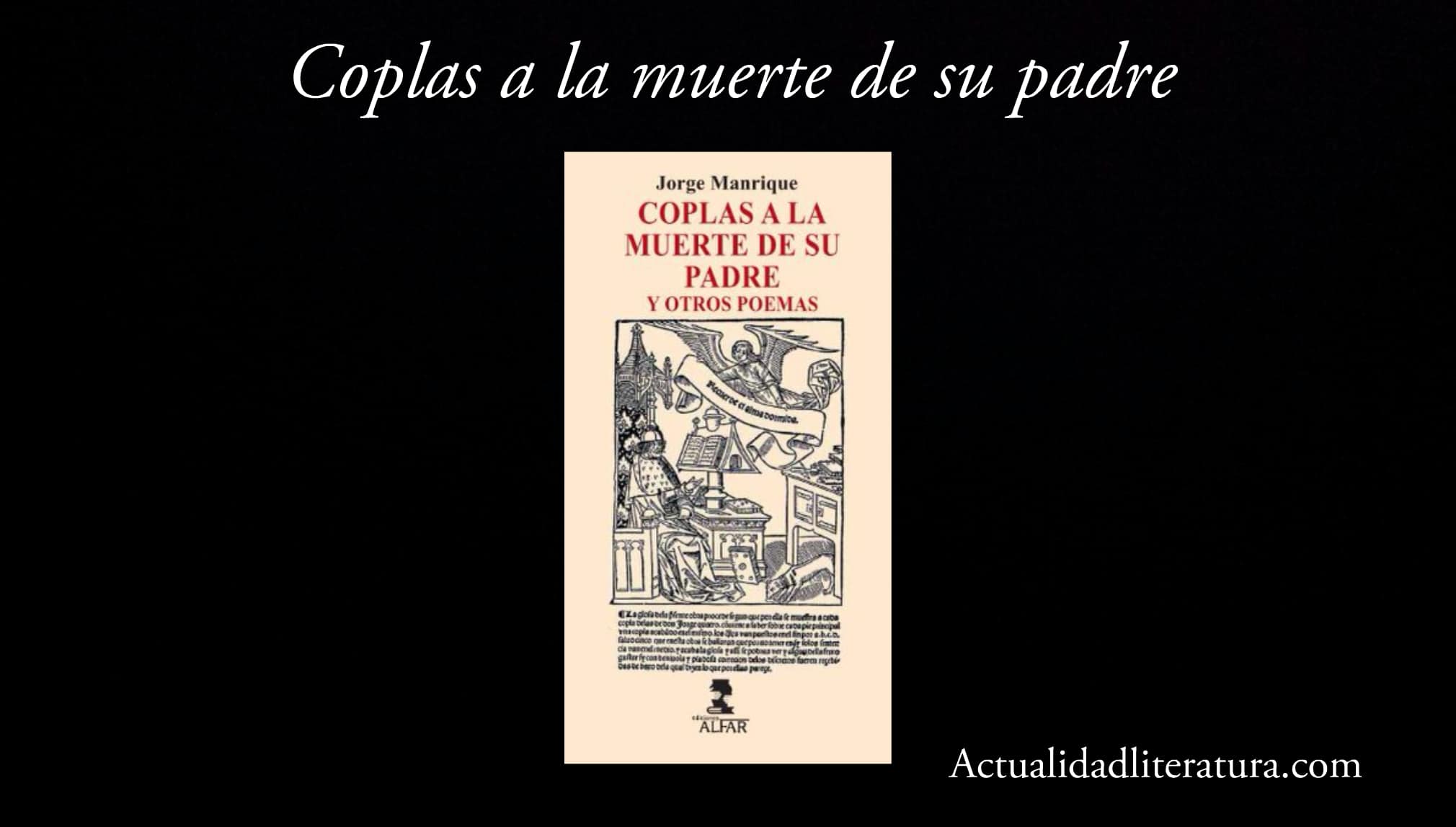
Phrase by Jorge Manrique.
Jorge Manrique was a famous Spanish poet of the pre-Renaissance. Although the date of his arrival in the world is not clear, there is a consensus that places him in Paredes de Nava (currently, Castilla y León) during the year 1440. In any case, what is undeniable is the intellectual vein present in his powerful and influential of the Castilian nobility.
The aforementioned is strengthened by the fact that his uncle was the prestigious poet Gómez Manrique and his father was Rodrigo Manrique, Count of Paredes de Nava. ANDn his youth he studied humanities and in the military area. He even participated successfully in various military confrontations. Precisely, in one of these skirmishes, he popularized the phrase “neither lie nor regret”.
An early death
Despite a relatively premature death, he had time to marry Mrs. Guiomar de Castañeda and father two children: Luir and Luisa. The death occurred in 1479, when he was just 39 years old, during the war of succession in favor of Isabel against Juana la Beltraneja. Today he is buried in the monastery of Uclés.
Literary work of Jorge Manrique
A large number of the writings of the Paredeño poet have managed to transcend time and, with it, conquer a place in immortality. Shis poems follow the line of the ironic and the burlesque, without forgetting love. His most famous work is the Elegy Coplas to the death of his father, esteemed as a true classic of Spanish literature.
Context
Beyond his death in full biological maturity, his dedication to writing was impressive. Despite having little time, Manrique had the opportunity to write many works. Which have been grouped by academics into three groups: loving, burlesque and doctrinal. Practically all of them are within the canons of songwriting poetry of the time.
The poetics of the Castilian writer consists of about 50 pieces. In them he addresses eroticism through fine allegories, (for its time this represented a scandal). However, he did not fail to comply with the linguistic conventions of Provençal poetry. That is, the song in octosyllable verse, repetitions of words and the elements of war in love allegory.
Love poems
In its composition the author uses the troubadour lyric. In addition, in many of his poems he makes reference to his private sentimental life. Therefore, it is a particularity that increases their value as historical pieces (and, of course, accentuates their literary significance).
Minor poems
Among the minor poems of Jorge Manrique, one of the best known is Of the profession he made in the order of love (of just 9 verses). Here it reflects the devotion to the beloved within a religious scheme that takes into account the vows of poverty and obedience.
Another of his emblematic poems is Love scale, in it defends the love relationship itself as something valuable. Similarly, en Castle of love Examine courtly love, where the lady shines with her gifts, while her lover does the job of admiring those virtues.
Burlesque compositions
Within this style, Jorge Manrique developed an intense and direct irony. Also, exploded a black humor that not all his readers liked. This line only has three pieces. En To a cousin of hers who was hindering her love affairs, uses the double meaning to make a simile between an unrequited love and an out of tune string of the same name (prima).
Meanwhile in Coplas to a debt that had pawned a brial in the tavern, Manrique makes harsh criticisms of a lady (who spoke ill of him). The character in question wanted to continue drinking and gave his mantle as payment. The third, A treat he made for his stepmother, consists of 120 verses, therefore, it is by far the longest writing of this trident.
Coplas to the death of his father

Coplas to the death of his father.
You can buy the book here: Coplas to the death of his father
From
He composed them on the occasion of the death of the master Rodrigo Manrique, his father, (victim of cancer). The poet maintained a very close relationship with him, consequently, his death caused him great emotional havoc. All his pain is mythologized through verses that mix tradition and originality. He wrote them "hot", immediately after death.
In these verses he is dedicated to detailing the most important details of the wake. Equally, shows his father in all his heroism, as a paragon of virtues and full of courage. There, the theme of death is approached from the general to the most human. Its publication occurred years after the death of Jorge Manrique and it became a classic of Spanish literature.
Modular
It is divided into three parts:
- The first It consists of fourteen stanzas written as a moralizing introduction. Its core is more philosophical in tone; raises the little value of earthly life and the eternal force of death.
- In the second part there are fifteen stanzas dedicated to the physical disappearance recent of important people.
- The third block is dedicated to praising both the life of his father —Who is described as a Christian knight and warrior— already prominent Roman characters.
Finally, Manrique starts a conversation with death. On the whole, the poet manages to represent mortal human existence in the most transitory way and to eternal life with a more transcendental sign.
Fragment Coplas to the death of his father
III
«Our lives are the rivers
that they are going to give in the sea,
what is dying;
there go the manors
rights to end
e consume;
there the flowing rivers,
there the other halflings
e more guys,
relatives, they are the same
those who live by his hands
and the rich.
V
«This world is the way
for the other, what is purple
without regret;
it is better to have good judgment
to walk this day
without erring.
We leave when we are born,
we walk while we live,
and we arrived
at the time we die;
so when we die,
we rested".
The Manriqueño Triangle
It is an initiative that was launched at the end of the 1990s thanks to the inhabitants of the province of Cuenca, in Castilla-La Mancha. It is a tribute to the life and work of Jorge Manrique through a tourist route designed to celebrate his legacy and highlight his time at these sites.
Specifically, The tour has three stops: Garcimuñoz Castle, the town of Santa María del Campo-Rus and the municipality of Uclés. In the aforementioned castle he was mortally wounded, in the second place he died and in the last stop he received the holy sepulcher.
Marking the path of the "renaissance of poetry"
Jorge Manrique is considered by historians as a very relevant exponent of Spanish literature. Who, due to its condition, it reflects the Renaissance balance due to its frank writing, with a humble, modest and natural style. Where vulgarisms only come to highlight the simplicity and rhetorical resources typical of the poets of the XNUMXth century.